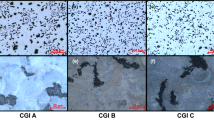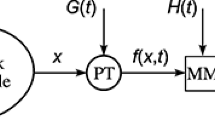Abstract
A method is proposed to diagnose wear and to determine the replacement schedule for a working end-mill cutter. Changes in the contact area between a working end-mill cutter and the workpiece during a milling process lead to a real-time variation in the contact resistance. Measuring the real-time contact resistance using a micro-ohm meter and a GPIB (general-purpose interface bus) interface control card allows the wear in a working end-mill cutter to be determined. Real-time contact resistance values for a working end-mill cutter are measured and recorded every second. The experimental results demonstrate that when the milling cutter operates continuously for about 20,000 s, the contact resistance decreases to about 25% of the original value for the brand new state. This method can be used for the future design of milling machines. If the value of the contact resistance for a working end-mill of the same type approaches this value, the cutter should be replaced in order to maintain efficient machining.
Similar content being viewed by others
References
Devillez A, Schneider F, Dominiak S, Dudzinski D, Larrouquere D (2007) Cutting forces and wear in dry machining of Inconel 718 with coated carbide tools. Wear 262:931–942
Bermingham MJ, Kirsch J, Sun S, Palanisamy S (2011) New observations on tool life, cutting forces and chip morphology in cryogenic machining Ti-6Al-4V. Int J Mach Tool Manu 51:500–511
Zhang C, Liu XH, Fang JW, Zhou LS (2011) A new tool wear estimation method based on shape mapping in the milling process. Int J Adv Manuf Technol 53(1–4):121–130
Aslantas K, Ucun İ, Çicek A (2012) Tool life and wear mechanism of coated and uncoated Al2O3/TiCN mixed ceramic tools in turning hardened alloy steel. Wear 274:442–451
Jalili Saffar R, Razfar MR, Zarei O, Ghassemieh E (2008) Simulation of three-dimension cutting force and tool deflection in the end milling operation based on finite element method. Simul Model Pract Theory 16:1677–1688
Takashi M, Eiji U (2010) Simulation of cutting process in peripheral milling by predictive cutting force model based on minimum cutting energy. Int J Mach Tool Manu 50:467–473
Wan M, Zhang WH, Tan G, Qin GH (2008) Systematic simulation procedure of peripheral milling process of thin-walled workpiece. J Mater Process Technol 197:122–131
Zhang C, Zhou LH, Liu XH (2013) Investigations on model-based simulation of tool wear with carbide tools in milling operation. Int J Adv Manuf Technol 64:1373–1385
Greenwood JA, Williamson JBP (1966) Contact of nominally flat surfaces. Proc R Soc Lond A 295:300–319
Kogut L, Etsion I (2002) Elastic-plastic contact analysis of a sphere and a rigid flat. J Appl Mech 69:657–662
Zhao Y, Chang L (2001) A model of asperity interactions in elastic-plastic contact of rough surfaces. J Tribol 123:857–864
Jackson RL, Green I (2006) A statistical model of elasto-plastic asperity contact between rough surfaces. Tribol Int 39:906–914
Saka N, Liou MJ, Suh NP (1984) The role of tribology in electrical contact phenomena. Wear 100:77–105
Sung LH, Kim JW (2015) Effect of displacement and humidity on contact resistance of copper electrical contacts. Tribol Int 95:256–261
Kaymakci M, Kilic ZM, Altintas Y (2012) Unified cutting force model for turning, boring, drilling and milling operations. Int J Mach Tools Manuf 54:34–45
Barari A (2013) Inspection of the machined surfaces using manufacturing data. J Manuf Syst 32:107–113
Chiou CH, Hong MS (2005) Instantaneous shear plane based cutting force model for end milling. J Mater Process Technol 70:164–180
Fontaine M, Moufki A, Devillez A (2007) Modelling of cutting forces in ball-end milling with tool-surface inclination: part I: predictive force model and experimental validation. J Mater Process Technol 189:73–84
Kim SJ, Lee HU, Cho DW (2007) Prediction of chatter in NC machining based on a dynamic cutting force model for ball end milling. Int J Mach Tools Manuf 47:1827–1838
Prickett PW, Johns C (1999) An overview of approaches to end milling tool monitoring. Int J Mach Tools Manuf 39:105–122
Li HZ, Zeng H, Chen XQ (2006) An experimental study of tool wear and cutting force variation in the end milling of Inconel 718 with coated carbide inserts. J Mater Process Technol 180:296–304
Zhu K, Zhang Y (2017) Modeling of the instantaneous milling force per tooth with tool run-out effect in high speed ball-end milling. J Mach Tools Manuf 118:37–48
Author information
Authors and Affiliations
Corresponding author
Rights and permissions
About this article
Cite this article
Yao, CW., Hong, T.W. Evaluating tool wear by measuring the real-time contact resistance. Int J Adv Manuf Technol 100, 2349–2355 (2019). https://doi.org/10.1007/s00170-018-2815-y
Received:
Accepted:
Published:
Issue Date:
DOI: https://doi.org/10.1007/s00170-018-2815-y




